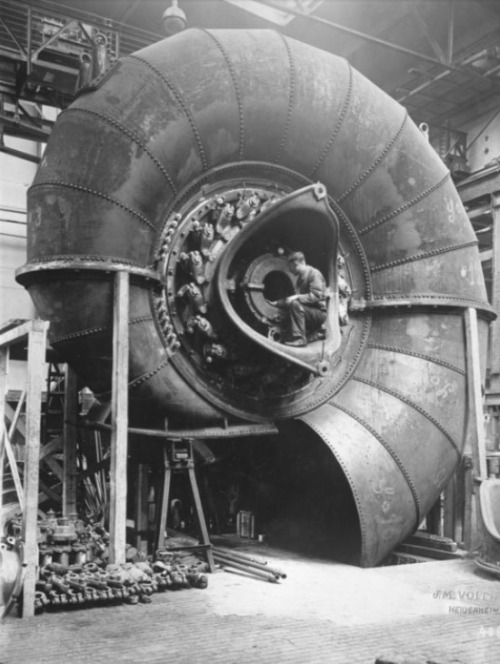gildedjuggernaut: Elevator Doors, Jock D. Peters with Feil...

Elevator Doors, Jock D. Peters with Feil & Paradise Architects
Bullocks Wilshire, Los Angeles, 1929
temporary ski jumps from the 50s.




temporary ski jumps from the 50s.
egon7272: LockHouse on the Danube Canal by Otto Wagner //...




LockHouse on the Danube Canal by Otto Wagner // Vienna, Austria
Kurt Anderson's list of words NOT to use if you...

Kurt Anderson's list of words NOT to use if you don't want to come across as a pretentious prick [my interpretation]. Dates back to 1997, when it was used as a guide for editing articles in New York Magazine. I'd love to see an updated version. [Artisanal, Locavore, Ergo, Hashtag, Fin, Postmodern, etc.]
german-expressionists: Wassily Kandinsky, Black and Violet,...

Wassily Kandinsky, Black and Violet, 1923
lawndrae: Kay Nielsen

Kay Nielsen
ha-ppyaccidents: The Louvre, 1970s

The Louvre, 1970s
gildedjuggernaut: RCA Building, Reinhard, Hofmeister, Hood,...

RCA Building, Reinhard, Hofmeister, Hood, Harrison, and Corbett
New York, 1933
*Americans quickly turned towards the electric light to illuminate and modernize their buildings and to bring a futuristic feeling to the night sky of the great metropolises. Some like Philip Johnson criticized these flood-lit buildings. Other, like the great draughtsman Hugh Ferriss, found a vision of a new world in the illuminated city. Many agreed with him, and American architecture changed forever.
"It is the habit to speak of a 'modern manner' as if there were just one, but already it is divided right down the middle. The Europeans get the Day; we get the Night….A favorite architectural illustration abroad is of a sunny summer afternoon.
Compare this with pictures by our own Hugh Ferriss, whom our architects consider the 'greatest renderer in the world.' In his 'Metropolis of Tomorrow' are sixty stations, among which a bare ten seem to represent daylight.
Here is modernism indeed. Thousands of years went by with their changes of style, but not until this century was there electric light, which, far, far more than the familiar triad of steel, glass, and concrete, has changed the basis of architecture. This is us." - Nation, Douglas Haskell
mucholderthen: Map of the Moon[ peacay | bibliodyssey ] From an...

Map of the Moon
[ peacay | bibliodyssey ]From an 18th century children's encyclopaedia,
Bertuch's Bilderbuch für Kinder
blastedheath: Raoul Dufy (French, 1877-1953), Tapestry design....

Raoul Dufy (French, 1877-1953), Tapestry design. Mixed media on paper mounted on canvas, 67 x 89 cm.
architectureofdoom: mikasavela: Chapel of Sainte-Thérèse...



Chapel of Sainte-Thérèse (1927) in Montmagny by Auguste Perret.
booksnbuildings: Hermann Billing: Design for the entrance to a...

Hermann Billing: Design for the entrance to a private street (1903)
Photo

denisforkas: Victor Hugo - Sketches of castle ruins. Around...

I.

II.

III.

IV.
Victor Hugo - Sketches of castle ruins. Around 1840
lesfleursdelart: Gustave Moreau

Gustave Moreau
messytimetravel: c. 1930 : Building spiral turbines...

c. 1930 : Building spiral turbines
Curated by Amanda Uren
Source: Retronaut
aveadonai: realityayslum: Giacomo Brogi - Milan, Detail of the...

Giacomo Brogi - Milan, Detail of the Cathedral Roof, c.1856-1881.
… via the National Gallery of Canada
Giacomo Brogi - Milan, Detail of the Cathedral Roof, c.1856-1881.
… via the National Gallery of Canada
contemporaryarch: The Glass Pavilion (Temporary Cologne...

Exterior view from front

waterfall inside main level (interior)

sheet glass staircase (interior)

interior of dome
The Glass Pavilion (Temporary Cologne Deutscher Werkbund Exhibition)
1914
by Bruno Taut
German Kunstvollen Architecture
In 1914, the Glass Pavilion would have been made almost entirely comprised of multicolored glass. Everything about it was organic and reflective, including the waterfall (picture above) within it. The Glass Pavilion is a secular temple of modernism.
titbit: Olbrich, casa Gluckert, Darmstadt,1901

Olbrich, casa Gluckert, Darmstadt,1901
Photo















Brak komentarzy:
Prześlij komentarz